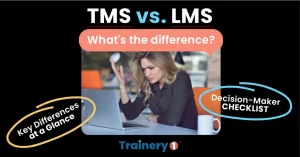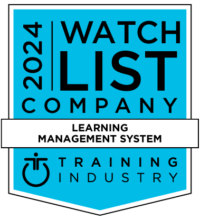Leadership is about creating confidence in times of great uncertainty.
In the wake of the 9/11 attacks, my company, Delphi Group, conducted a broad survey of nearly 3,000 professionals that was intended to identify the impact of uncertainty and ways that businesses could mitigate its negative effects on workers. While the survey results aren’t available online, as it was conducted over 20 years ago, I remember that one of the questions asked respondents to pick a single factor that most alleviated the negative effects of uncertainty.
The overwhelming majority chose trusted leadership over a variety of other choices, including access to information, capital, media/news, assurances of personal safety from the government, and even the ability to foresee future events.
This result is timeless. Uncertainty, in any form, takes an enormous toll on us; it robs us of control and confidence. People like predictability, and we weave it into the very fiber of our society and systems. The whole reason for contract law is to architect certainty into the socioeconomic fabric. We love sports because the rules are definitive and immutable. In the absence of certainty, we struggle to focus, we feel that we have no control, and we lose trust in people and systems that we otherwise do not question. In its worst case, uncertainty leads to creating a crisis narrative of existential proportions. Let’s face it, humans are drawn to the drama of potentially apocalyptic scenarios.
We have been seeing, and likely will continue to see, much of that play out in the way financial markets are currently reacting to the uncertain trajectory of COVID-19 (the coronavirus), but the uncertainty is also beginning to take its toll on each of us as individuals and certainly in our businesses.
You may think that your role as a leader has little to do with how that affects the people who work with and for you. If that’s the case, then I’ll humbly say that you’re defining leadership in the wrong way. Your role as a leader is not to sugarcoat or sidestep the truth. It’s also not to predict the future. Instead your role is to provide a protected space for those you are leading to feel confident that they will be cared for and best protected from the implications of uncertainty.
An Uncertain Scenario
So, how do you do that? I’ve found one technique to be extraordinarily effective in going beyond the dogma and providing people with a tool to navigate uncertainty with confidence. It’s called scenario-based planning (SBP).
Scenario-based planning is one of the least-often used tools, and even when it is used it’s rarely used correctly. SBP is an exercise in which you identify a variety of threat or opportunity scenarios and then play each one out. The intent of SBP is not to predict the future; it’s not even to identify all possible futures. Instead, the most valuable part of SBP is that it develops an organizational muscle that inspires confidence in dealing with uncertainty.
There are myriad ways to conduct SBP, but the most important thing to keep in mind is that you need to clearly define the dimensions of the challenge. Then identify at least six ways that each dimension can manifest itself. In other words, if you run a coffee shop one dimension will be the loss of adequate inventory. But that can likely be broken down into the type of inventory (coffee/tea/milk/alternative drinks), the geography of the inventory (African/Latin American/domestic), the storage of the inventory (in-store/brewery/ warehouse). So, visually, your dimension (column) is Inventory and your categories (rows) are Type, Geography, and Storage. (A full SBP matrix should have about eight columns and six rows.)
Here’s where SBP gets interesting. Once you have built a full matrix of the problem dimensions and ways each dimension manifests itself, create randomized scenarios that cut across the matrix by picking one cell at random from each column. At first, these random combinations will seem nonsensical, but the point here is to build a capability to deal with even the most ridiculous outlier scenarios. I’ve seen this work in virtually every industry, from cybersecurity and insurance to automotive and cable TV.
What I’ve observed firsthand over decades of teaching SBP is that organizations that do SBP regularly are able to deal with uncertainty much better. They think more creatively, pivot faster, and instill confidence in their people.
Most important, they provide a way to take back some degree of control and confidence in what is usually a situation where people feel they’ve been robbed of both.







